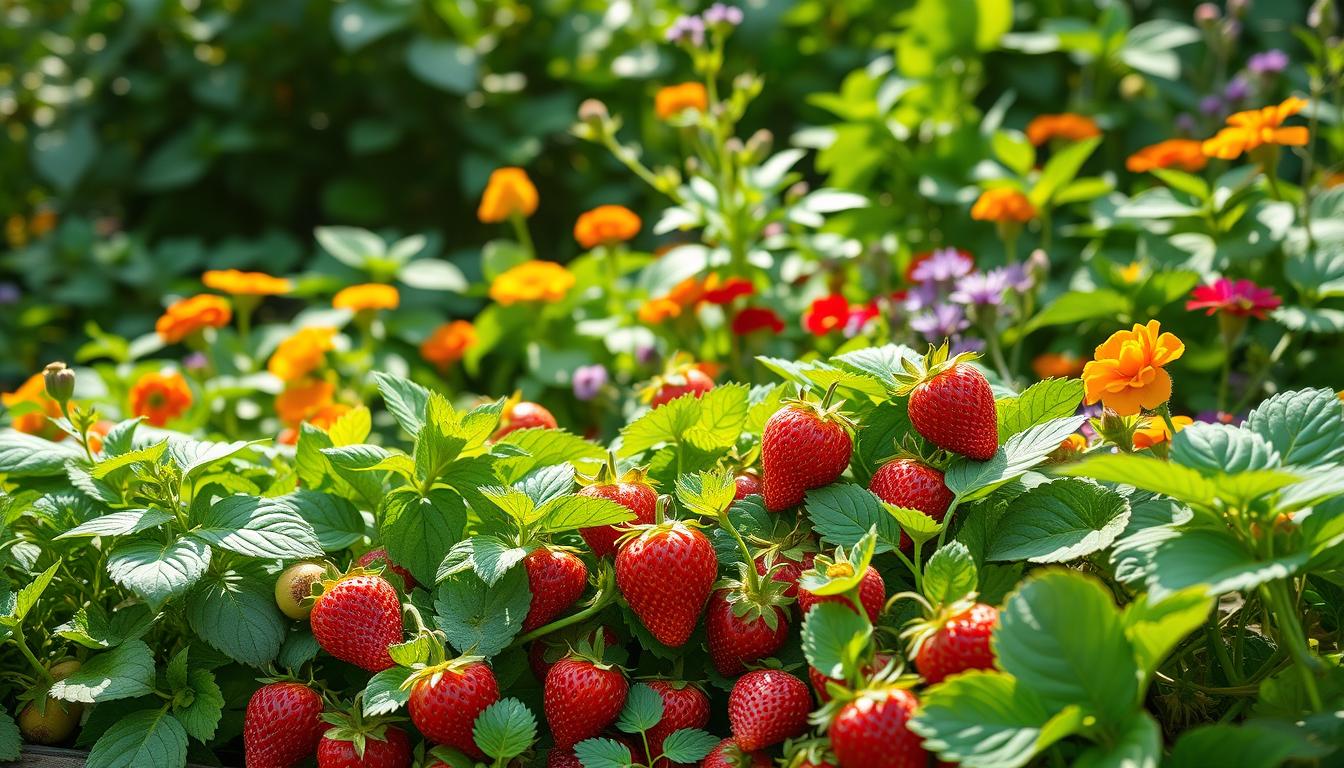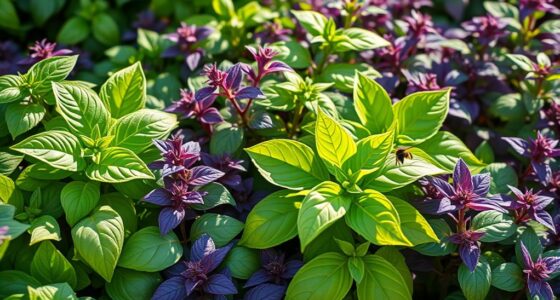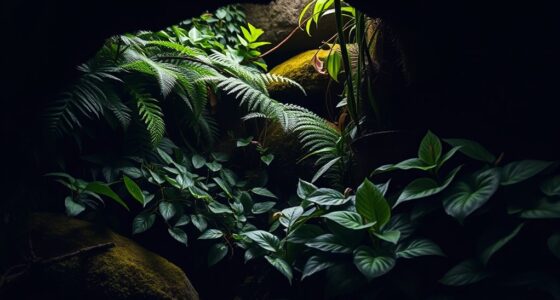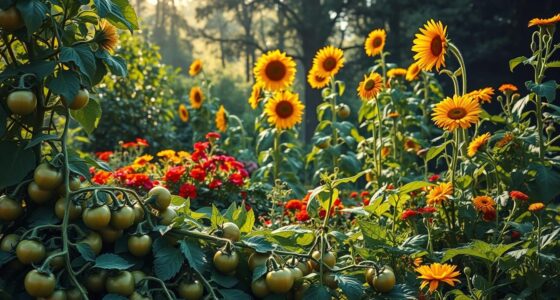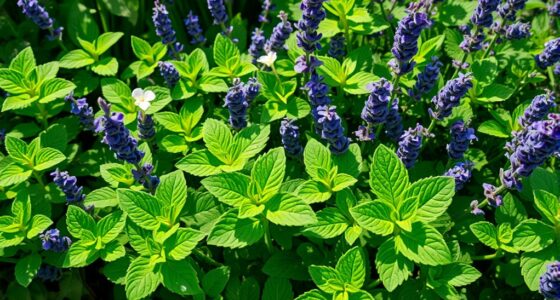As you step into your garden, you can almost taste the sweetness of ripe strawberries waiting for the moment to shine. Growing strawberries is not just about sticking a plant in the soil; it’s an immersive experience that connects you to nature and the earth. You may want to consider strawberries companion planting, a beautiful method of enhancing your garden by selecting good companion plants for strawberries. These partnerships can make your strawberry patch thrive while also improving the overall health of your garden. Imagine walking through rows of plump berries, knowing that you’ve optimally paired them with the best plants to grow with strawberries. In this article, you’ll discover the top companion plants that can help elevate your strawberry-growing journey.
Key Takeaways
- Companion planting can significantly enhance strawberry yields.
- Specific herbs, vegetables, and flowers improve soil quality and attract pollinators.
- Implementing the right companion plants helps repel destructive pests.
- Healthy plant partnerships contribute to overall garden health.
- Experimenting with different combinations can lead to thriving strawberry patches.
Why Companion Planting Matters for Strawberries
Companion planting plays a crucial role in cultivating healthy strawberries. By growing complementary plants together, you can harness various benefits that boost the overall health of your garden. There are numerous companion planting ideas for strawberries that enhance growth and keep pests at bay. Understanding why these combinations work can help you create a flourishing strawberry patch.
Benefits of Companion Planting
Engaging in strawberries companion planting brings multiple advantages. Some key benefits include:
- Deter harmful pests: Certain plants repel insects that may harm strawberries.
- Improve soil fertility: Companion plants can enrich the ground, making nutrients more accessible.
- Optimize space: Pairing strawberries with other plants efficiently utilizes garden space.
- Enhance flavors: Some herbs and flowers can elevate the taste of strawberries.
How Plants Influence Each Other
The interaction between different plants can either promote growth or cause competition. By choosing compatible species for strawberries, you create an environment where plants support each other. For example, plants with deep roots may help aerate the soil and draw up nutrients, benefiting your strawberries. Understanding these relationships sets the foundation for effective strawberries companion planting.

Ideal Companions for Strawberries
Choosing the right strawberry plant companions can significantly enhance your garden’s productivity. A well-curated strawberry companion plants list not only contributes to healthier strawberry yields but also promotes biodiversity in your garden. You might be surprised by how certain plants can work synergistically, providing benefits ranging from pest control to improved flavor.
Herbs That Thrive with Strawberries
Herbs are fantastic companions in strawberry beds. Plants like basil and oregano serve dual purposes; they enhance the flavor of your strawberries while naturally keeping pests at bay. Incorporating these aromatic herbs will elevate your strawberry yield and contribute to a more inviting garden scent.
Vegetables to Pair with Strawberries
Several vegetables make excellent companions for strawberries without competing for nutrients. Lettuce and spinach fit well within your companion plants for strawberry beds. They grow quickly and occupy limited space, allowing strawberries to thrive while providing shade to the soil, which helps retain moisture.
Flowers That Offer Protection
Including flowers in your strawberry garden adds beauty and essential benefits. Marigolds can deter harmful insects, while borage attracts pollinators. These flowers support a balanced ecosystem, further enhancing the growing conditions for your strawberries.

| Type | Examples | Benefits |
|---|---|---|
| Herbs | Basil, Oregano | Flavor enhancement, Pest control |
| Vegetables | Lettuce, Spinach | Short growth cycle, Space-saving |
| Flowers | Marigolds, Borage | Pest deterrents, Pollinator attraction |
Herbs That Make Great Companions
Integrating herbs into your strawberry garden can significantly enhance growth and flavor while providing natural pest control. Choosing the best plants to grow with strawberries includes considering these essential herbs: basil, mint, and oregano. Each of these organic companion plants for strawberries contributes uniquely, promoting a healthier gardening ecosystem.
Basil: Enhancing Flavor and Growth
Basil is an excellent choice for those looking to improve the flavor of strawberries. This herb not only enhances the taste but also encourages robust growth. Planting basil nearby can attract beneficial insects while also repelling harmful pests, making it one of the best plants to grow with strawberries.
Mint: Natural Pest Control
Mint serves as a natural pest deterrent, effectively keeping away aphids and other unwanted insects. Its strong aroma confuses pests, protecting your strawberries while adding variety. Incorporating mint as one of your organic companion plants for strawberries helps create a balanced environment in your garden.
Oregano: Deterring Harmful Pests
Oregano plays a vital role in your strawberry garden by masking the appealing scent of strawberries from pests. This can lead to a decrease in infestations while still benefiting from the versatility of oregano in the kitchen. Utilizing oregano among your organic companion plants for strawberries will contribute to a thriving garden.

Vegetables That Complement Strawberries
Incorporating vegetables that complement strawberries into your garden can lead to abundant harvests and healthier plants. The right combinations can help maximize space and resources, making your garden thrive. Consider the following vegetables as effective companion plants for strawberry beds.
Lettuce: Space-Saving Pairing
Lettuce occupies minimal space and acts as a perfect ground cover for strawberries. This leafy vegetable benefits from the shade provided by strawberry plants, which helps retain moisture while suppressing weeds. You’ll find that strawberries companion planting with lettuce not only enhances growth but also creates a visually appealing garden layout.
Spinach: Shared Nutrient Needs
Spinach and strawberries thrive under similar conditions, making them well-suited companions. Both enjoy well-draining soil and adequate sunlight. When you plant spinach alongside strawberries, it provides shade that can help protect soil moisture, significantly benefiting both crops. This combination can keep your strawberry beds healthy and productive throughout the growing season.
Radishes: Quick-Growing Allies
Radishes are known for their rapid growth and can be planted between rows of strawberries. This natural pest deterrent helps keep harmful insects at bay while also providing a tasty harvest for you. Their short maturity period makes them an excellent addition to strawberries companion planting, as they can be harvested before strawberries fully mature.
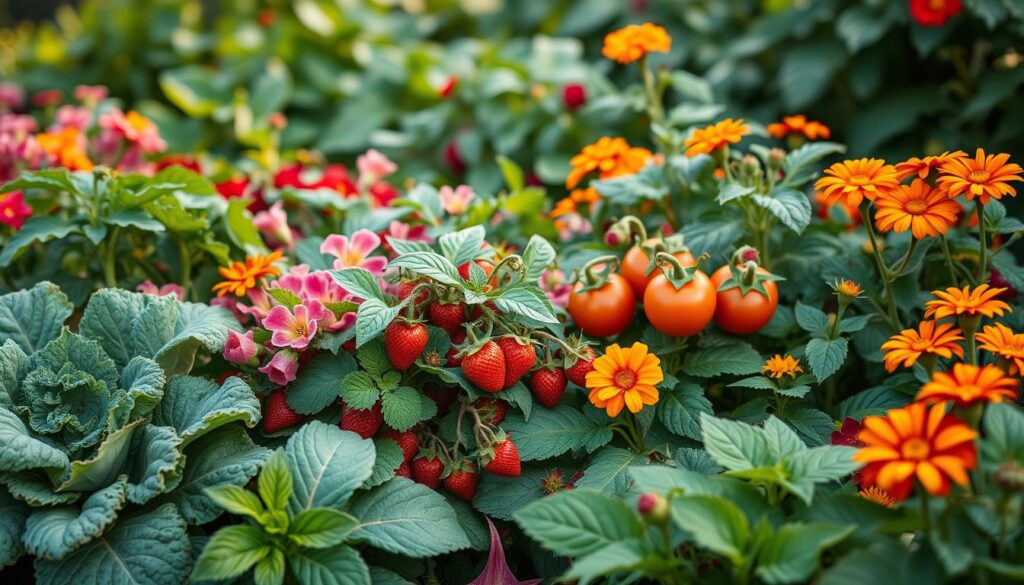
| Vegetable | Benefits | Growing Conditions |
|---|---|---|
| Lettuce | Ground cover, moisture retention | Cool temperatures, partial shade |
| Spinach | Soil protection, shared nutrients | Cool weather, well-draining soil |
| Radishes | Pest deterrent, quick turnover | Fast growth, ample sunlight |
Flowers That Aid Strawberry Growth
Incorporating flowers into your strawberry garden can significantly enhance its productivity and overall health. These flowers serve dual purposes, both beautifying your garden and supporting the growth of your strawberries. Here are some excellent choices for strawberry garden companion plants that you can incorporate into your strawberry beds.
Marigolds: Pest Deterrents
Marigolds are well-regarded for their ability to repel common garden pests like aphids and whiteflies. Their bright colors not only add vibrancy to your garden but also attract beneficial insects that can help keep pests at bay. These flowers are particularly effective as companion plants for strawberry beds, creating a protective barrier around your strawberries.
Nasturtiums: Attracting Beneficial Insects
Nasturtiums bring a charming touch to your strawberry garden while serving a practical purpose. The vibrant blooms attract important pollinators, helping to boost fruit production. Additionally, their sprawling nature can overshadow strawberries, making it challenging for birds to spot those ripe berries. This dual functionality makes nasturtiums a smart addition to your companion planting strategy.
Borage: Enhancing Flavor and Pollination
Borage is another remarkable plant that can thrive alongside strawberries. Known for attracting bees and other pollinators, it plays a crucial role in enhancing both flavor and yield. Incorporating borage into your strawberry garden not only improves pollination rates but also adds unique nutrients to the soil, benefiting your strawberries in the long run.

| Flower | Pest Control | Additional Benefits |
|---|---|---|
| Marigolds | Repels aphids and whiteflies | Attracts beneficial insects |
| Nasturtiums | Discourages pests by camouflaging strawberries | Attracts pollinators |
| Borage | N/A | Enhances flavor and attracts bees |
Plants to Avoid Near Strawberries
In the quest for a thriving strawberry garden, understanding which plants to avoid is just as essential as knowing which ones to embrace. Certain varieties can hinder strawberry growth or introduce diseases that can devastate your crop. To ensure a bountiful harvest, it’s vital to recognize which plants can disrupt your strawberry patch.
Why Certain Plants Are Detrimental
Plants from the nightshade family, including tomatoes and peppers, tend to share pathogens that can negatively impact strawberries. These plants can transmit diseases that hinder strawberry vigor and yield. Additionally, other plants may compete significantly for nutrients and space, leading to less productive strawberry plants. By understanding these dynamics, you can create a more successful gardening environment.
Common Plants to Keep Away
- Tomatoes
- Peppers
- Cucumbers
- Potatoes
- Eggplants
Recognizing Compatibility Issues
When planning your strawberry patch, refer to a comprehensive strawberry companion plants list for guidance. This list helps identify plants that promote strawberry growth while avoiding those that cause trouble. Companion planting ideas for strawberries can greatly enhance your garden’s overall health when you choose compatible species carefully. Stay informed about potential compatibility issues, and your strawberries will flourish like never before.
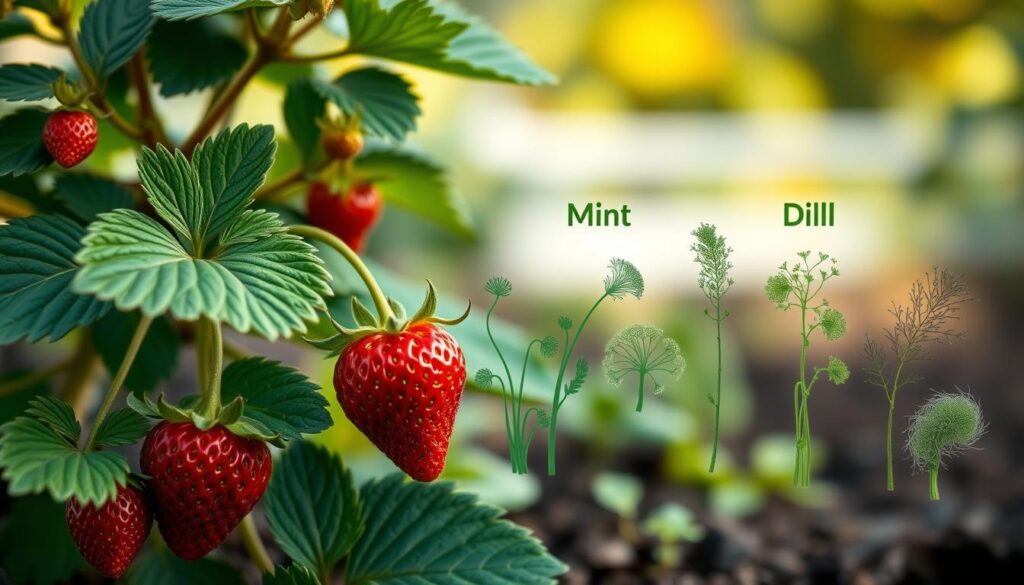
Tips for Planting Companion Plants
Success in strawberries companion planting relies heavily on using effective planting techniques. When pairing companion plants for strawberry beds, it’s essential to consider the specific needs of each plant, ensuring they thrive together without competition. Proper timing for planting can enhance growth and yield, allowing your plants to maximize their potential.
Best Planting Techniques
Starting with quality soil is crucial for companion plants to flourish. Amending the soil with organic matter boosts nutrient content. When planting, ensure that you follow the recommended depth for each plant to encourage healthy roots. For strawberries, this involves keeping the crown of the plant visible above the soil line. When introducing companions, consider planting herbs like basil or flowers such as marigolds around your strawberries; they can offer mutual benefits.
Ideal Spacing for Companion Growth
Providing adequate space between your strawberries and their companions allows them all to access light, water, and nutrients effectively. Generally, strawberries benefit from spacing plants about 12 to 18 inches apart. Meanwhile, companion plants can be spaced based on their growth habit. This arrangement minimizes competition for resources while maximizing overall garden health.
Timing Your Planting
Planting timing significantly impacts the growth of both strawberries and their companions. Early spring is an ideal time for planting strawberries. Alongside them, introduce fast-growing companions like lettuce or radishes shortly after. This harmonious timeline ensures that your strawberries have established themselves well before their companions enter the scene, leading to a flourishing garden.
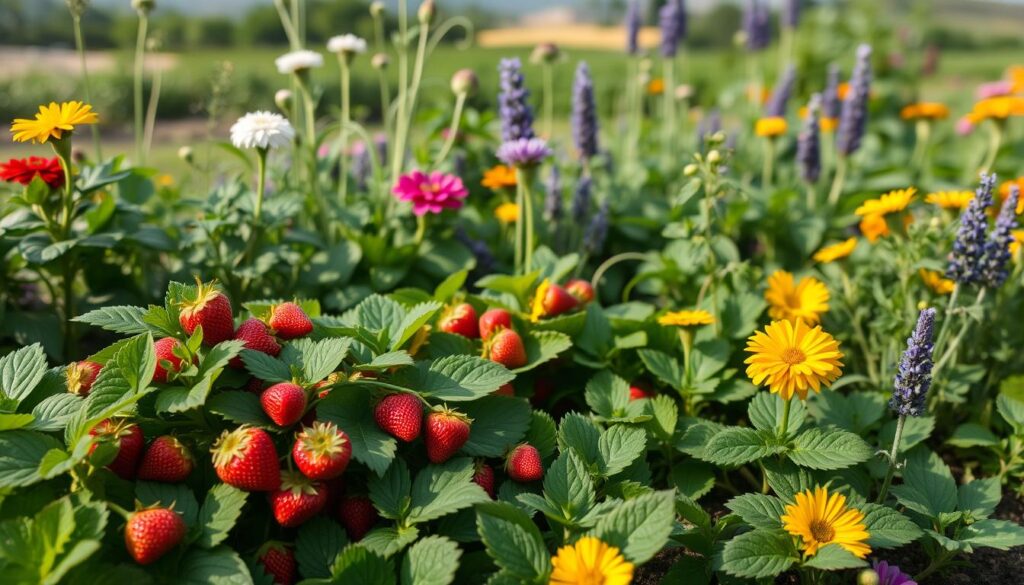
How to Care for Companion Plants
Caring for your companion plants is crucial to the success of your strawberry garden. Understanding the specific needs of your plants ensures that both your strawberries and their chosen companions flourish together. This section will cover the essential aspects of watering, nutritional needs, and maintenance tips for good companion plants for strawberries, including organic companion plants for strawberries.
Watering Needs for Different Plants
Watering is a vital part of plant care. Each plant has its own requirements. For instance, strawberries prefer consistent moisture, while some herbs might thrive in slightly drier conditions. It’s important to monitor your plants. Use a moisture meter or perform a simple test by sticking your finger into the soil. This way, you can ensure adequate hydration without overwatering.
Nutritional Requirements
Fertilization varies across different plants. Strawberries usually benefit from a balanced fertilizer, while companion plants might require specific nutrients. For instance, herbs often thrive with organic compost or slow-release fertilizers. Conduct a soil test to determine what amendments may be necessary, ensuring all your plants, including good companion plants for strawberries, receive the proper nourishment.
Pruning and Maintenance Tips
Regular maintenance, including pruning, promotes healthy growth. Remove dead or yellowing leaves to encourage new growth, especially for herbs and flowers that grow alongside strawberries. Maintaining proper spacing between your plants aids in airflow, reducing the risk of disease. Keep an eye on your garden and adjust care as necessary, enhancing the synergy among your organic companion plants for strawberries.
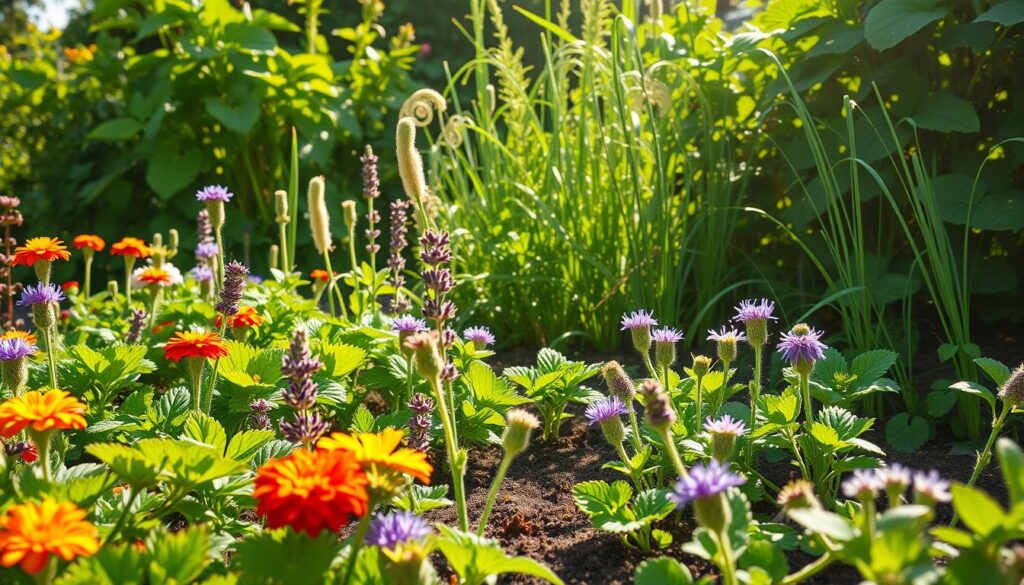
Seasonal Considerations for Companion Planting
Understanding the seasonal dynamics of your garden can greatly improve your success with companion planting ideas for strawberries. Each season brings unique conditions that influence the growth and interaction of strawberry plant companions. By adapting your strategies to fit these seasonal changes, you can maximize the health and yield of your strawberry patch.
Spring Planting Strategies
Spring marks the perfect time to introduce new strawberryplant companions. As temperatures rise and soil becomes workable, consider planting herbs like basil and oregano alongside your strawberries. These herbs not only enhance flavor but also provide pest protection. Look for vegetables like lettuce and spinach that can thrive in the cooler spring weather. To create a harmonious garden, prepare your soil well and ensure adequate moisture as your new companions establish their roots.
Summer Companions for Long Harvests
During the summer, focus on companions that can extend your harvest duration. Plant fast-growing radishes or robust nasturtiums that attract pollinators, complementing your strawberries. Establishing these summer companions promotes ongoing productivity and ensures a vibrant garden atmosphere. Regular watering and monitoring for pests become essential to maintain the health of both strawberries and their companions.
Fall Preparations for Overwintering
As the days shorten, preparing your strawberry plant companions for winter becomes crucial. In the fall, consider adding beneficial plants that can shield strawberries from harsh winter conditions. Cover crops like clover or winter rye can enrich the soil while preventing erosion. Mulching with straw or leaves can insulate the roots of strawberries, aiding in their survival through winter months. Planning for these seasonal changes optimally supports your strawberries for next spring.

| Season | Companion Plants | Benefits |
|---|---|---|
| Spring | Basil, Oregano, Lettuce, Spinach | Pest protection, space-saving, enhanced growth |
| Summer | Radishes, Nasturtiums | Extended harvest, attracting pollinators |
| Fall | Clover, Winter Rye | Soil enrichment, winter protection |
Using Companion Plants for Pest Management
Effective pest management is essential for cultivating healthy strawberries. Implementing strawberries companion planting can significantly enhance your garden’s natural defenses. By selecting good companion plants for strawberries, you can attract beneficial insects while deterring harmful pests, creating a thriving environment for your crops.
Attracting Beneficial Insects
Many plants have the ability to draw in helpful insects, such as ladybugs and lacewings. These insects serve as natural predators to common pests that threaten strawberries. For instance, planting dill and fennel not only adds interest to your garden but also provides a food source for these beneficial species. As they thrive, they will patrol your strawberry plants and help keep unwanted pests at bay.
Natural Repellents from Companion Plants
Some plants function as natural repellents, possessing distinctive scents that deter pests. For example, marigolds release compounds that discourage aphids, making them excellent companions for strawberries. Growing varieties of mint can also be beneficial, as their aroma often confuses and repels pests, allowing your strawberry plants to flourish unimpeded.
Creating a Balanced Ecosystem
By adopting strawberries companion planting, you contribute to a balanced ecosystem within your garden. This approach not only aids in pest management but promotes biodiversity. You can cultivate a harmonious garden where plants support one another’s growth. Sharing space with a variety of companion plants enables healthier strawberry yields, ultimately enhancing your gardening success.

Maximizing Your Garden Space with Companions
Efficiently using your garden space can enhance your strawberry plants’ growth and productivity. By incorporating companion plants for strawberry beds, you can create a thriving ecosystem that benefits all your plants. Consider these methods to maximize your gardening space while incorporating the best plants to grow with strawberries.
Vertical Gardening Techniques
Vertical gardening involves growing plants upward instead of outward. This technique not only saves ground space but also allows for better sunlight exposure. Use trellises or hanging planters for plants such as peas or cucumbers alongside your strawberries. This technique ensures you optimize your garden area while keeping your strawberry beds healthy.
Intercropping for Efficiency
Intercropping is an excellent way to maximize productivity by planting compatible species in the same area. For example, growing basil or marigolds alongside strawberries can help deter pests while using common nutrients efficiently. This method of combining the best plants to grow with strawberries promotes a healthier and more diverse garden.
Utilizing Container Gardening
If your gardening area is limited, container gardening presents a viable solution. Plant strawberries in containers, which allows you to manage water and nutrients more effectively. You can mix in companion plants, such as herbs, to facilitate growth and improve flavor. Container gardening can enhance your strawberry beds while making it easier to care for your plants individually.
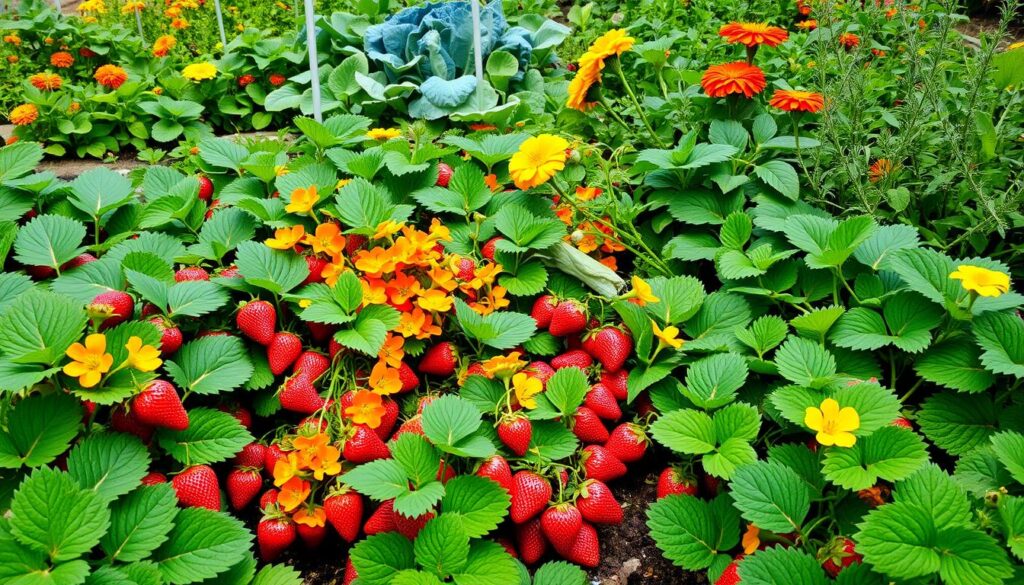
Harvesting and Enjoying Your Strawberries
Harvesting strawberries marks a rewarding moment in your gardening journey. Sweet, ripe strawberries not only provide distinct flavors but also showcase the benefits of proper strawberry garden companion plants. Knowing when and how to pick your berries can significantly enhance your enjoyment and yield.
Tips for a Bountiful Strawberry Harvest
To achieve a plentiful harvest, consider these essential tips:
- Choose the right time: The best moment to harvest strawberries is when they exhibit a deep red color and are firm to the touch.
- Look for even ripeness: Ensure the fruits are uniformly red to maximize sweetness.
- Use proper techniques: Gently twist or cut the stems with a pair of scissors, avoiding damage to the plants. This method promotes healthy growth for future bounties.
Best Practices for Picking Strawberries
Employing effective practices when harvesting strawberries can minimize plant damage:
- Pick in the morning: Aim to harvest your strawberries during the cooler parts of the day to maintain freshness.
- Check your garden regularly: Frequent checking allows you to gather ripe strawberries at their peak.
- Harvest multiple times: Continuous harvesting during the season encourages further fruit production.
Enjoying Your Homegrown Bounty
Your strawberries can shine in a variety of culinary applications. Consider these delightful uses:
- Fresh and simple: Enjoy your strawberries straight from the garden for an invigorating snack.
- In desserts: Use them in pies, cakes, or jams to elevate your favorite recipes.
- Savory salads: Blend strawberries into salads for a refreshing twist and a burst of flavor.
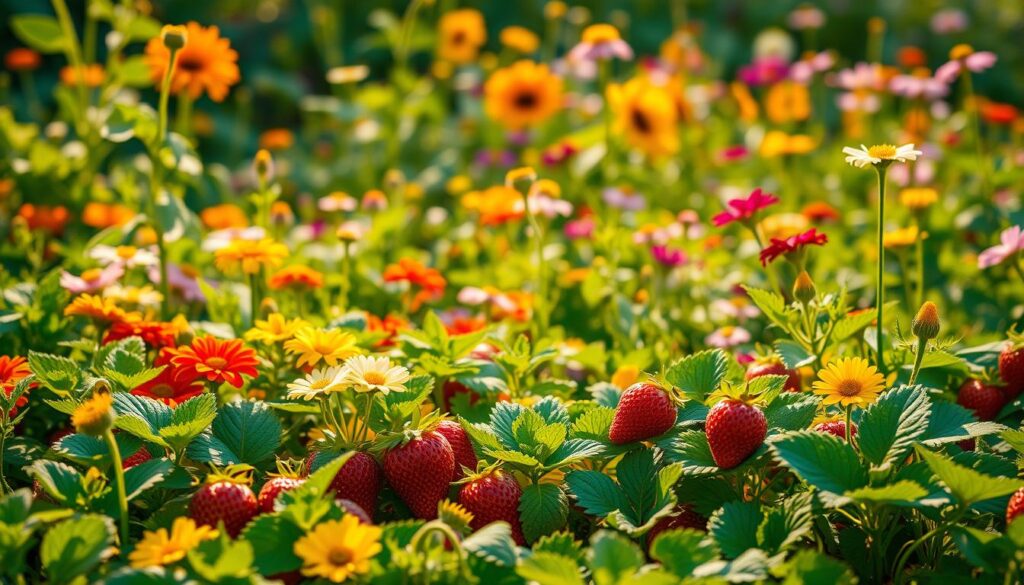
Conclusion: Create Your Perfect Strawberry Garden
In wrapping up our discussion on organic companion plants for strawberries, it’s clear that utilizing these planting strategies can significantly enhance your gardening experience. Leveraging the natural relationships between plants will not only boost your strawberry yields but also protect against pests and create a harmonious garden environment. The suitable combinations of herbs, vegetables, and flowers will elevate your success, allowing strawberries to flourish alongside their companions.
As you embark on this journey of companion planting, take inspiration from the combinations mentioned throughout the article. Remember, experimenting with different good companion plants for strawberries can lead to delightful discoveries and improved results. Each garden is unique, so don’t hesitate to tailor your choices based on your environment and personal preferences.
Your next steps involve planning your layout and selecting the most compatible plants designed to enrich your strawberry patch. Dive into the world of companion planting with confidence, and watch as your strawberry garden transforms into a thriving, productive haven filled with flavor and vitality. Happy gardening!
